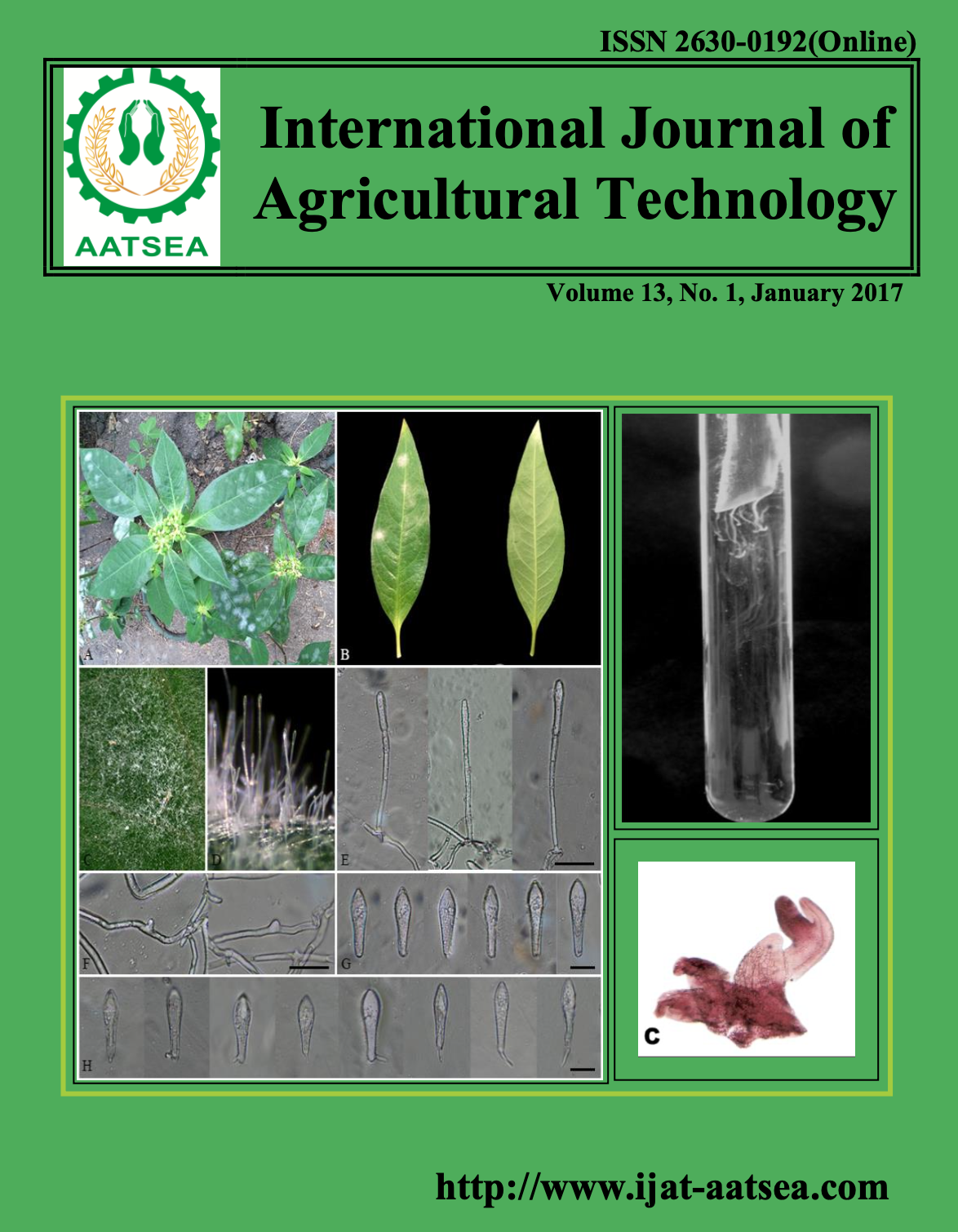Quality of probiotik fermented milk using Lactobacillus casei subsp. casei R-68 as a starter with the variation of skim milk and sucrose
Main Article Content
Abstract
The functional food in the form of probiotic fermented milk is one of the alternative foods that can be consumed to keep the body fit and healthy. This research aimed to determine the amount of optimal skim milk and sucrose to produce probiotic fermented milk using Lactobacillus caseisubsp. casei R-68 as a starter. The research was conducted experimentally using a Completely Random Design. The data were analyzed statistically using ANOVA and continued with DNMRT test at the level of 5%. The results show that variation of skim milk or sucrose significantly affected pH, total lactic acid, number of lactic acid bacteria, total of solid without fat as well as the amount of fat and protein, but did not significantly influence the ash and fat contents. In the case of sensory test, the variation of sucrose significantly influenced all sensory parameters. The best treatment was obtained from the use of 15% skim milk and 5% sucrose.
Article Details

This work is licensed under a Creative Commons Attribution-NonCommercial-NoDerivatives 4.0 International License.
References
Bill, D. D., Yang, C. S., Morgan, M. E. and Bodyfelt, F. W. (1972). Effect of sucrose on the production of acetaldehyde and acids by yogurt culture bacteria. Journal of Dairy Science 55:1570-1573.
Codex Stan 243-2003. Codex Standard for Fermented Milk.
Etiyati. (2010). Effect of sucrose addition and type of bacteria in the production of corn starch-based yoghurt. MS Thesis, Universitas Islam Negeri Sunan Kalijaga, Yogyakarta, Indonesia.
Fardiaz, D., Tandian, S. and Winarno, F. G. (1980). Introduction: Food Technology. PT Gramedia Pustaka, Jakarta.
Francois, Z. N., Ehl Hoda, N., Florence, F. A., Paul, M. F., Felicite, T. M. and El Soda, M. (2007). Biochemical properties of some thermophilic Lactic Acid Bacteria strains from traditional fermented milk relevant to their technological performance as starter culture. Biotechnology 6:14-21.
Hayes, M., Ross, R. P., Fitzgerald, G. F., Hill, C. and Stanton, C. (2006). Casein-derived antimicrobial peptides generated by Lactobacillus acidophilus DPC6026. Applied and Environmental Microbiology 72:2260-2264.
Hosono, A., Wardoyo, R. and Otani, H. (1990). Inhibitory effects of lactic acid bacteria from fermented milk on the mutagenecities of volatile nitrosamines. Agricultural and Biological Chemistry 54:1639-1643.
Hosono, A., Wardoyo, R. and Otani, H. (1989). Microbial flora in dadih, a traditional fermented milk in Indonesia. Lebensmittel-Wissenchaft Technology 22:20-24.
Kim, S. H., Lim, C. H., Lee, C. and An, G. (2009). Optimization of growth and storage conditions for lactic acid bacteria in yogurt and frozen yogurt. Journal of the Korean Society for Applied Biological Chemistry 52:76-79.
Lahov, E. and Regelson, W. (2006). Antibacterial and immunostimulating casein-derived substances from milk: casecidin, isracidin peptides. Food and Chemical Toxicology 34:131-145.
National Standardization Agency. Quality Standard of Yoghurt. SNI 102981:2009.
Pakkanen and Alto (1997). in Zsuzsanna Bosze. (2007). Bioactive Components of Milk. Springer Science & Business Media Copyright. eBook.
Pato, U. (2003). Bile and acid tolerance of lactic acid bacteria isolated from dadih and their antimutagenicity against mutagenic heated tauco. Asian-Australasin Journal of Animal Sciences 16:1680-1685.
Pato, U., Ali, M. and Parlindungan, A. K. (2005). Taurocholate deconjugation and cholesterol binding by indigenous dadih lactic acid bacteria. Hayati 12:103-107.
Pitrayadi, M., Ali, A. and Pato, U. (2015). Addition of various skim milk on the quality of cocoghurt using Enterococcus faecalis UP-11 isolated from tempoyak. Jom unri 2.
Rahman, A., Fardiaz, S., Rahayu, W.P., Suliantari. and Nurwitri, C.C. (1992). Milk Fermentation Technology. Inter-University Center. Bogor Agricultural University, Bogor.
Setyaningsih, D., Apriyantono, A. and Sari M.P. Sensory Analysis for Food and Agro-Industry. IPB Press. Bogor.
Sintasari, A., Kusnadi, J. and Ningtiyas, W. D. (2014). Effect of addition of skim milk and sucrose on the characteristic of probiotic drink from red rice extract. MS Thesis, Universitas Brawijaya, Malang, Indonesia.
Syaputra, A., Pato, U. and Rossi, E. (2015). Additioon of various sucrose concentration on the quality of cocoghurt using Enterococcus faecalis UP-11 isolated from tempoyak. Jom unri 2.
Tonguc, I. E., Kinik, O., Kesenkas, H. and Acu, M. (2013). Physicochemical, microbiological and sensory characteristics of using different probiotic fermented milk. Pakistan Journal of Nutrition 12:549-554.
US Dairy Export Council. (2014). Nonfat Dry Milk and Skimmed milk powder. www.usdec.org/Products/content.cfm?ItemNumber=82654.Reference Manual for U.S. Milk Powders. Arlington, VA: U.S. Dairy Export Council. 41 pp.
Zhang, T., Zhang, C., Li, S., Zhang, Y. and Yang, Z. (2011). Growth and exopolysaccharide production by Streptococcus thermophilus ST1 in skim milk. Brazilian Journal of Microbiology 42:1470-1478.


